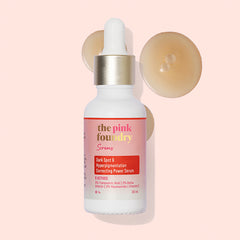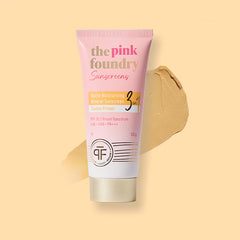What is Centella Asiatica?
Centella asiatica, also known as gotu kola, Indian pennywort, or Asiatic pennywort, is a small, herbaceous plant that is native to Asia. It has been used for centuries in traditional medicine systems, particularly in Ayurveda and Traditional Chinese Medicine, for its potential health benefits.
Centella asiatica is known for its distinctive round leaves and is often used for its medicinal properties. It is commonly used in skincare products for its potential to improve skin texture, reduce the appearance of scars, and soothe irritated skin. It is a common ingredient in topical creams and moisturisers for skin health.

Meaning of Centella Asiatica
The term "Centella Asiatica" refers to a plant species known by its scientific name, Centella asiatica. This plant is commonly called gotu kola, Indian pennywort, or Asiatic pennywort. It is native to Asia and is used for various medicinal and therapeutic purposes in traditional medicine systems. In modern skincare, however, it is widely used for its antioxidant and soothing properties, making it suitable for individuals with sensitive skin, or those looking to treat acne.
Benefits of Centella Asiatica
Centella asiatica is associated with several potential health benefits. These benefits are derived from its active compounds and have been studied in both traditional medicine and modern scientific research. Here are some of the potential benefits of Centella asiatica:
- Soothing and Anti-Inflammatory: Centella Asiatica is known for its anti-inflammatory properties, which help calm and soothe irritated or sensitive skin. It can be effective in reducing redness, discomfort, and inflammation caused by conditions such as acne, eczema, or sunburn.
- Wound Healing: This ingredient promotes skin cell regeneration, making it valuable for wound healing. It can help the skin recover more quickly from minor cuts, burns, abrasions, or post-procedure irritation.
- Collagen Production: Centella Asiatica stimulates collagen synthesis, which is essential for maintaining skin elasticity and firmness. This can lead to an improved skin texture and a reduction in the appearance of fine lines and wrinkles.
- Moisturization: It helps maintain skin hydration, contributing to a softer and smoother complexion.
- Barrier Support: Centella Asiatica supports the skin's natural barrier function, which is crucial for protecting the skin from external stressors such as pollutants and UV radiation. A strong skin barrier is essential for overall skin health.
- Antioxidant Protection: It offers antioxidant properties that can help protect the skin from damage caused by free radicals and UV radiation.
- Redness Reduction: Centella Asiatica can help reduce redness and inflammation, making it a valuable ingredient for individuals with sensitive or redness-prone skin.
- Anti-Aging: Due to its skin benefits and antioxidant properties, Centella asiatica is sometimes used in anti-aging skincare products to reduce the signs of aging, such as wrinkles and fine lines.
Related Blogs

Skin Minimalism: The Simple Skincare Routine You Need
TABLE OF CONTENTS What is Skin Minimalism? Benefits of Skin Minimalism Best Minimal Skincare Routine Skin...
Continue Reading
Ethyl Ascorbic Acid vs. L Ascorbic Acid: Which Vitamin C Form is Best for Your Skin?
TABLE OF CONTENTS Ethyl Ascorbic Acid vs L Ascorbic Acid: Key Differences Benefits of Each Form of Ascorbic Acid ...
Continue Reading
Best Anti-Aging Ingredients You Should Include in Your Skincare Routine
TABLE OF CONTENTS Best Anti-Ageing Ingredients for Skin How These Ingredients Work How to Use Anti-Ageing Ingredi...
Continue Reading
How Often to Use Salicylic Acid: Finding the Right Frequency for Your Skin
TABLE OF CONTENTS How Often Should I Use Salicylic Acid Serum? How Often to Use Salicylic Acid for Specific Skin Types ...
Continue Reading















